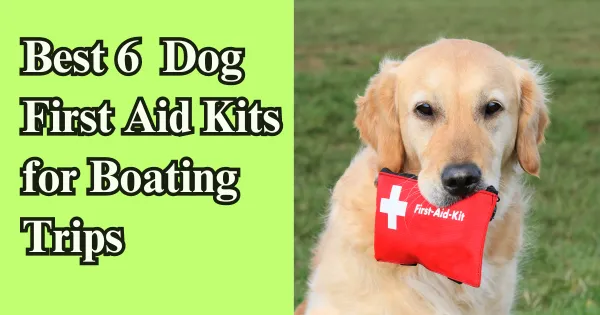
Boating with your dog can be an enjoyable and bonding experience, but it requires careful preparation and training to ensure safety and comfort.
By following a few key tips, you can help your dog adapt to life on the water, making each trip pleasant for both of you.
Below are eight essential training tips to consider when planning for a day out on the boat with your furry friend.
Here are 8 tips for training your dog for boating
- Gradual Introduction
- Basic Training Commands
- Use a Canine Life Jacket
- Create a Safe Area
- Frequent Breaks
- Hydration and Nutrition
- Acclimate to Sounds
- Practice Safety Drills
1. Gradual Introduction
Gradually introducing your dog to the boat while it’s docked can help them become comfortable with this new environment.
Allow your dog to explore the boat slowly and at their own pace. This initial exposure can reduce anxiety and make them feel more at ease.
Gradual introduction helps your dog to associate the boat with positive experiences, making future trips more enjoyable for both you and your pet.
2. Basic Training Commands
Training your dog to obey basic commands such as sit, stay, and come is crucial for maintaining control and ensuring safety while on the water.
These commands can help manage your dog’s behavior in potentially dangerous situations and make the boating experience smoother.
Basic obedience training can also help your dog feel secure, knowing that they are following your lead in an unfamiliar environment.
3. Use a Canine Life Jacket
Even if your dog is a strong swimmer, a canine life jacket is an essential safety measure.
These jackets are specifically designed to keep dogs safe in case they accidentally fall overboard. Make sure it fits properly and is comfortable for your dog to wear for extended periods.
Canine life jackets often come with handles, making it easier to grab hold of your dog in an emergency.
4. Create a Safe Area
Designate a secure area on the boat where your dog can stay comfortably during the trip.
This area should have non-slip surfaces to prevent sliding and offer some shade to protect them from the sun.
Creating a safe space helps your dog feel more secure and reduces the risk of accidents or injuries while on the boat. A designated spot can also give your dog a sense of familiarity.
5. Frequent Breaks
Plan for regular breaks to allow your dog to relieve themselves and stretch their legs.
Just like humans, dogs need breaks during long boating trips. Stopping at dog-friendly ports or anchor points can provide your dog with the necessary breaks.
Frequent breaks also help prevent restlessness and ensure your dog’s physical comfort throughout the journey.
6. Hydration and Nutrition
Keep fresh water and food readily available for your dog to ensure they stay hydrated and well-fed.
Boating trips can be dehydrating, especially under the sun, so it’s important to encourage your dog to drink water regularly. Having their usual food on hand can prevent stomach upset and maintain their nutrition.
Always bring enough supplies to last the entire trip.
7. Acclimate to Sounds
Boats can produce unfamiliar sounds such as the engine, horn, and waves hitting the hull.
Gradually exposing your dog to these noises can help reduce anxiety and make them more comfortable while aboard. Start with short trips or even let them listen to recordings of boat sounds to get them used to it.
Acclimating your dog to these noises can minimize their stress levels during actual trips.
8. Practice Safety Drills
Practice “man overboard” drills and other emergency procedures involving your dog. Knowing how to react in case of an emergency is crucial for your dog’s safety.
These drills help both you and your dog become familiar with what to do if an unexpected situation arises.
Practicing safety drills ensures that you are prepared and that your dog can follow commands under stress.
Conclusion
Boating with your dog can be a rewarding experience filled with fun and adventure. By following these 8 training tips for boating with dogs, you can ensure that both you and your furry friend have a safe and enjoyable time on the water. Remember, preparation and patience are key to making your boating adventures a success!
FAQ
- Can all dogs go boating?
Not all dogs enjoy boating. It’s important to assess your dog’s comfort level with water and boats before taking them out. - What should I do if my dog falls overboard?
Ensure someone is ready to jump in and assist your dog. Keep calm, and use commands to guide them back to the boat. - How can I train my dog to swim?
Start in shallow water and use positive reinforcement. Gradually increase the depth as your dog becomes more comfortable. - What are the best life jackets for dogs?
Look for life jackets that are specifically designed for dogs, with a good fit, buoyancy, and visibility features. - Should I take my dog on a long boating trip?
If it’s your dog’s first time, start with shorter trips to help them acclimate to the experience.





